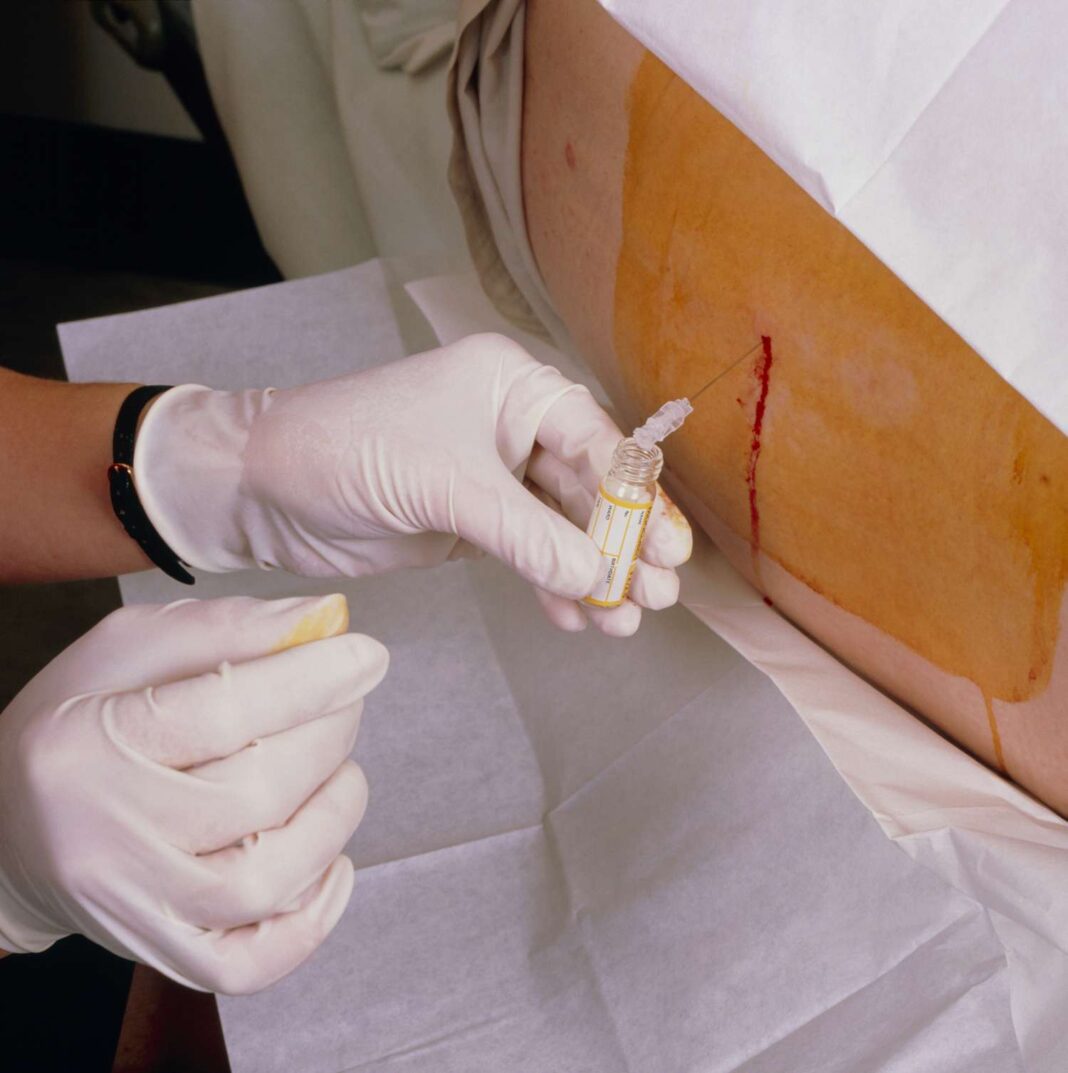Purpose of the Test
A lumbar puncture (LP), also called a spinal tap, is a common neurological test done to examine the cerebrospinal fluid (CSF) – the protective fluid that surrounds the brain and spinal cord. During the procedure, a needle is carefully inserted between the bones of the lumbar spine, which is in the lower back. A small amount of CSF is typically collected so it can be studied thoroughly in a lab. This procedure is used to help diagnose a wide variety of disorders and can be a treatment for certain conditions too.
Side Effects and Risks
The side effects and risks associated with a lumbar puncture include:
- Headache: Up to one-third of people who get a lumbar puncture will later develop a spinal headache due to CSF leaking from the puncture site. The more leakage there is, the more severe the headache.
- Back pain: You might feel mild and temporary aching in your back where the needle was placed.
- Bleeding: There is a risk of bleeding from a lumbar puncture in the area that was punctured. Bleeding into the spinal canal is rare.
- Infection: There’s a slight risk of developing an infection in the site, but this rarely happens.
- Tingling or numbness: Sometimes, the needle may brush against one of the peripheral nerves, which can cause temporary numbness or pain.
After the Test
You’ll need to take it easy for the rest of the day, and it’s a good idea to lie down if possible. Keep drinking water to make sure you stay hydrated. Your healthcare provider may give you more specific instructions.
Interpreting Results
Your test results may take several days or weeks to come back, depending on the type of test that’s being done. If you are having a CSF culture, the results will take days or longer. Simple test results, such as a white blood cell (WBC) count or red blood cell (RBC) count, may be available within an hour.
The CSF can be tested for:
- Color and clarity: CSF is normally clear with no color, like water. If it’s pink, yellow, or cloudy, this may signify bleeding or inflammation in the brain.
- Composition: An increased number of WBCs suggests infection or inflammation. A high number of RBCs is indicative of bleeding. Elevated levels of protein can also be an indicator of infection or an inflammatory disease like MS.
- Pathogens: CSF is checked for bacteria, viruses, and fungi.
- Cancer cells: Abnormal cells in CSF can point to certain types of cancer.
Follow-Up
You may need additional testing to figure out the specific cause of your symptoms. For possible MS, an LP alone can’t diagnose this, so you may also have an MRI.
A Word From Verywell
An LP, while uncomfortable, is not as bad as most people’s fear. In most cases, the worst part is the pinch felt with the injection of the numbing medicine. While complications can occur, they are very infrequent. The benefits of obtaining the fluid for testing usually outweigh the risks and discomfort of the procedure.
Frequently Asked Questions
Q: What are the risks associated with a lumbar puncture?
A: The risks associated with a lumbar puncture include headache, back pain, bleeding, infection, and tingling or numbness.
Q: How long does it take to get the test results?
A: The test results may take several days or weeks to come back, depending on the type of test that’s being done.
Q: What happens if I have an infection?
A: If you have an infection, you may need to receive antibiotics or other medications to help treat the infection.
Q: Can I get a headache from a lumbar puncture?
A: Yes, up to one-third of people who get a lumbar puncture will later develop a spinal headache due to CSF leaking from the puncture site.





